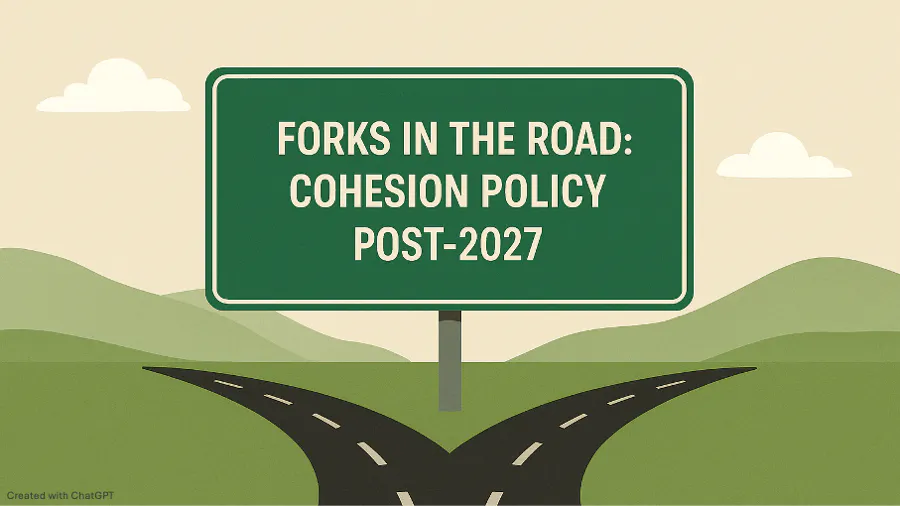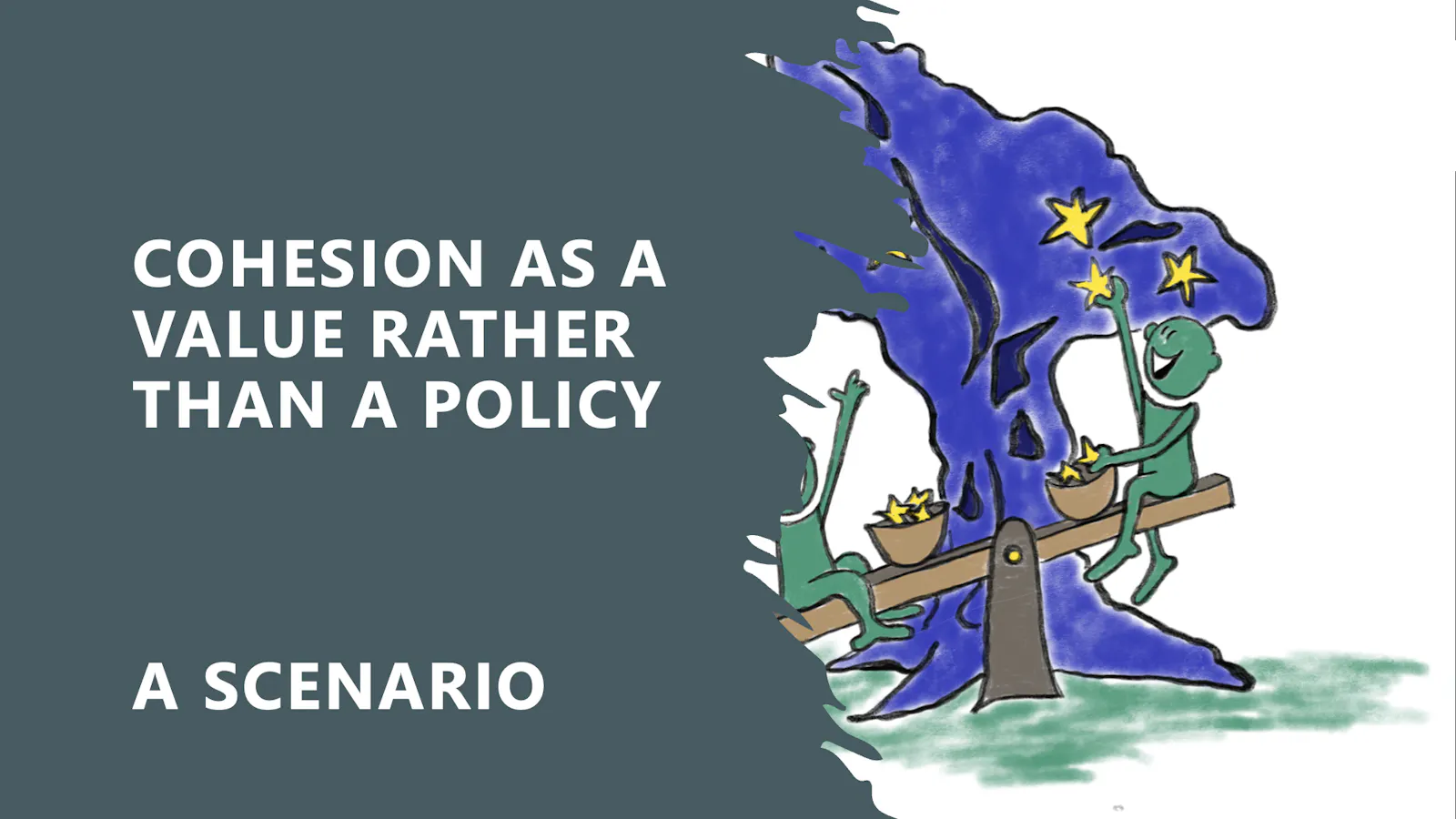Forks in the road to cohesion policy post-2027
May 2025

As Europe prepares for the next multiannual financial framework (MFF), the future of cohesion policy is uncertain. The political context, shape and financial volume of future EU cohesion policies and instruments for achieving the Treaty's economic, social and territorial cohesion objectives are under discussion. This includes lessons learnt from cohesion policy to date, including the recovery and resilience facility (RRF).
At present, the debate on the future is still open. Much will depend on the European Commission’s initial proposals, which are expected in summer 2025, and subsequent negotiations with member states and co-legislators.
Several potential bifurcation points are emerging, each capable of nudging the policy towards either incremental evolution or radical transformation. Understanding these potential shifts is crucial for anyone concerned about how the EU will support its regions in the coming decades.
Performance-based cohesion. A further shift towards a results-oriented cohesion policy appears inevitable. Inspired by the RRF, future cohesion funding may increasingly depend on achieving clear milestones and targets rather than merely reporting costs. While performance-based financing is already possible within cohesion policy – via tools such as Simplified Cost Options (SCOs) or Financing Not Linked to Costs (FNLC) – it is still not widely used. The upcoming discussions will likely centre on establishing robust performance indicators and frameworks, potentially at the level of Member States, programmes, or individual operations. Another question is whether the focus will be on outputs, results, or impacts.
Reform conditionalities. Building on the RRF model, post-2027 cohesion policy may tie funding even more closely to the delivery of reforms. This would go beyond the ex-ante, enabling and macroeconomic conditionalities that are known in cohesion policy. Unlike the broad, uniform conditionalities of current cohesion policy, the RRF’s approach tailors reforms to each member state, creating a direct trigger for funding. Future cohesion policy conditionalities could be endogenous (enhancing the effectiveness of cohesion spending itself) or exogenous (ensuring compliance with broader EU values and frameworks). In either case, the causal link between reforms and funding will be a critical design element.
EU co-financing rates. The proportion of EU versus national funding is also under review. Two opposing trends are currently emerging. One is a shift towards 100% EU funding, following the precedent set by the RRF and certain crisis instruments in cohesion policy. The other is reduced EU co-financing to spread a likely tighter EU budget across more priorities. Where the balance will fall remains uncertain.
Thematic priorities. The future thematic focus of cohesion policy is also set to expand. It is expected to include a stronger focus on security, competitiveness, innovation, affordable housing, and water resilience. In general, a clear alignment with overall EU priorities is expected. While greater alignment with overall EU strategies is likely, tensions remain around balancing national and EU strategic frameworks with the place-based needs of individual regions.
Flexibility. Traditionally, cohesion policy has focused on supporting long-term structural change. However, the flexibility introduced through recent crisis instruments challenges this model. This flexibility goes hand in hand with a focus on short-term rather than long-term investments and planning horizons. Calls for more agile, short-term interventions are growing louder and are questioning whether a seven-year planning cycle is fit for today's rapidly changing world.
27 national plans. One of the biggest possible shifts concerns the architecture of the policy itself. Future cohesion policy could be based on 27 national plans, potentially incorporating the current ERDF, CF, ESF+, JTF, EMFAF, EAFRD and Interreg landscapes, among others. Expectations range from a revised and strengthened version of the national strategic reference frameworks (i.e. the NSRFs that preceded the current partnership agreements) to a modernised version of the national recovery and resilience plans (we know them as the RRF). Each model has profound implications for how policy is implemented and by whom.
Delivery model. Depending on how national plans are designed, delivery systems could follow one of several paths. These are either (a) the shared management of cohesion policy, (b) a modernised version of the RRF delivery system (a hybrid version seems unlikely), or (c) a completely new delivery system. Direct management by the European Commission is not expected to play a significant role, regardless of how it looks from the outside.
Sub-national role / partnership approach. One of the pillars of current cohesion policy is the strong emphasis on place-based approaches and the involvement of local and regional stakeholders, for example through regional programmes or participation in programme partnerships. Depending on how national plans are designed and implemented, the role of regional programmes and regional representation in partnerships may change significantly.
The bifurcation points outlined here reveal just how wide the field of possible futures for cohesion policy post-2027 remains. Over the coming months, debate will hopefully bring greater clarity. Will cohesion policy remain a cornerstone of solidarity across the Union, rooted in the partnership principle and territorial cohesion? Or will it evolve into a more flexible, performance-driven instrument with national plans at its heart? The stakes for regions, cities and citizens could not be higher, and the choices made will shape the Union's social and territorial fabric for years to come.
by Kai Böhme
 (S'ouvre dans une nouvelle fenêtre)
(S'ouvre dans une nouvelle fenêtre)


